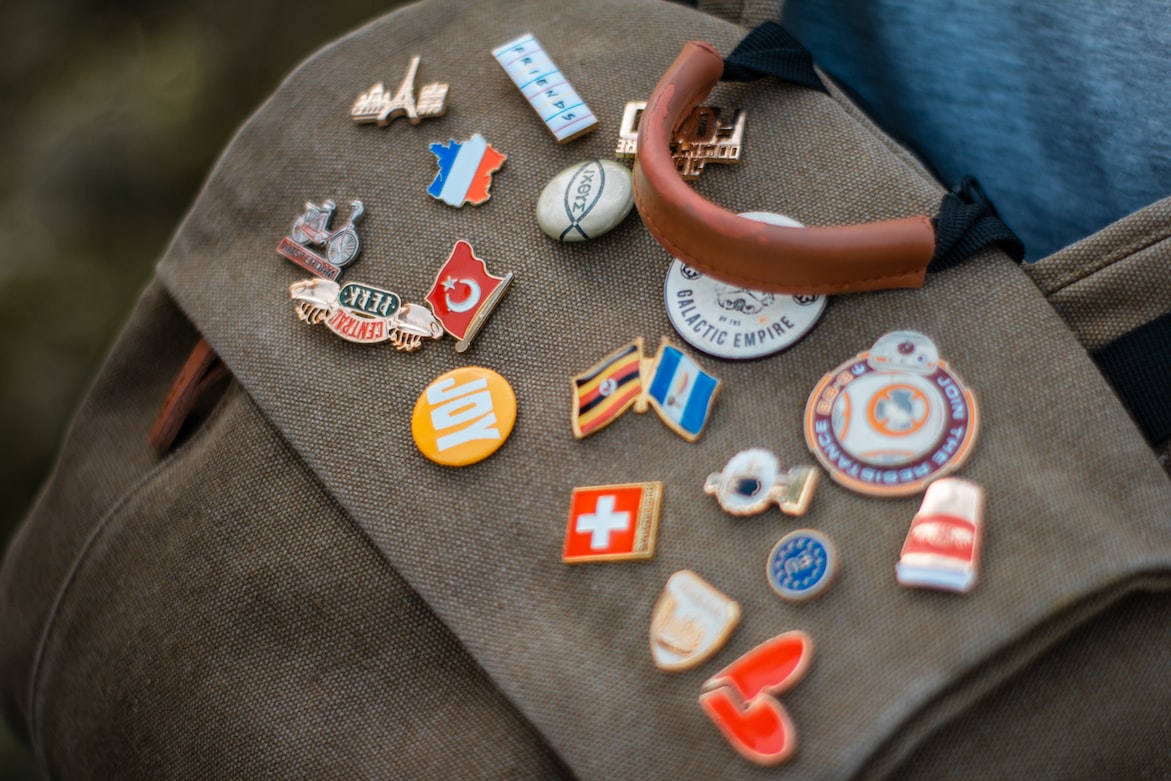The idea of creating something custom is always very exciting.
However, for custom badges, coins, and patches, the design process can be a bit more overwhelming than anticipated. There are a variety of detailed design elements that you will need to consider as you create your custom piece.
1. Finishes
For items like badges and coins, you will want to think about the finish of your piece. And Interestingly enough, the finish is often what people notice first.
The finish gives a badge of character, shine, and depth. The type of finish you choose for your custom pin badges will play a significant role in the design process. Your choice of finish should be tied to the intended use and who it will be worn by.
Here are a few finishes to consider:
- Shiny Finish
A shiny finish is a great choice for any badge or coin. This finish is available in many colors, including nickel, gold, rose gold, copper or bronze, and even two-toned.
A shiny finish is an excellent choice if you are looking for a product that can be used for giveaways or promotions. As if that weren’t enough, a shiny finish is also very durable. Bright tones won’t fade over time, so your badge will remain shiny for a long time.
- Matte Finish
Are you a vintage lover? A fan of retro styles? If that’s the case, matte finishes might be for you. A matte finish on a badge or coin is striking because it looks antique. You can find these copper, brass, and tin finishes.
You must think about your badge’s purpose and audience before designing. This will help you to capture the message in different design elements like shape, size, and finish. In addition, having a more antique finish communicates quality craftsmanship and long-term service.
2. Attachments
After figuring out what finish best suits your personal taste, the next step is attachments. Of course, not everything needs to have an attachment; however, it can make your badge very convenient and add a lot of personalization to make your badge or coin super unique!
Attachments can come in different forms:
- Badge Attachment
Badge attachments are super convenient because it makes wearing your badge easy. There are three main attachments to consider for your custom badges: uniform pin, wallet clip, and screw.
A uniform pin is a joint catch and stem attachment that allows you to poke a needle through the material and securely attach itself. A wallet clip is best for flat badges and can be clipped anywhere—your pants, belt, or shirt pocket. As for a screw, these are best recommended for hats because it’s a secure and tight attachment. However, it’s unlike a uniform pin that can move around.
While all of these attachments have their recommended uses, the beauty of customization is that you can do whatever you want. Thus, feel free to use whichever badge attachment you like best.
- Ribbon Attachment
While badge attachments attach to items, a ribbon attachment is used to hang a medal or coin.
There are many different types of ribbon attachments; a few examples are a knot, loop, stitch, and jump ring. A knot is very simple; all you do is attach your medal or coin with a ribbon that is secured via a knot. This attachment is a good option if you don’t want your coin or medal to move around too much. A loop is just pulling a ribbon through the coin or medal opening. Next, a stitch attachment is a ribbon secured by sewing everything together. Lastly, a jump ring is when the ribbon and medal are joined through a ring, and everything is very secure.
3. Hard VS. Soft Enamel
During your badge, coin, or other item design process, you will probably need to decide between hard or soft enamel if you want paint color added to your design.
- Hard Enamel
Hard enamel paint is heated to a high temperature in order to harden and then polished smooth. As a result, you won’t feel any texture on the badge or coin.
- Soft Enamel
In contrast, a soft enamel is air-dried, and the paint isn’t completely flush with the edges of the design. As a result, you can feel the metal ridges as you move your finger across the coin.
You might be wondering, is one better than the other? Well, hard enamel is considered to be of better quality. However, it’s all really up to design preferences. Some people prefer the texture of soft enamel, while others prefer a smoother finish. So, it really depends on what kind of look you’re going for.
4. Threaded Designs
Consider threaded designs if you are looking for something unique and truly custom. A threaded patch is timeless in its classic design. Here are a few types to consider:
- Embroidery
While embroidery can sometimes have lesser detail than printed work on some badges, it’s in its own league of art. These types of patches are very distinctive due to their high-visibility stitching and vivid color.
- Woven
A woven patch is made from a fabric mesh with less stitching, which results in a modern and cool product. The result is a great way to get fine detail while still adding texture and vibrancy. This is a great option for sharp edges and high color contrast designs.
- Metallic Thread
If you are interested in something truly striking, you can add embellishment by using metallic thread. You can make the entire patch metallic or use accents against darker colors.



